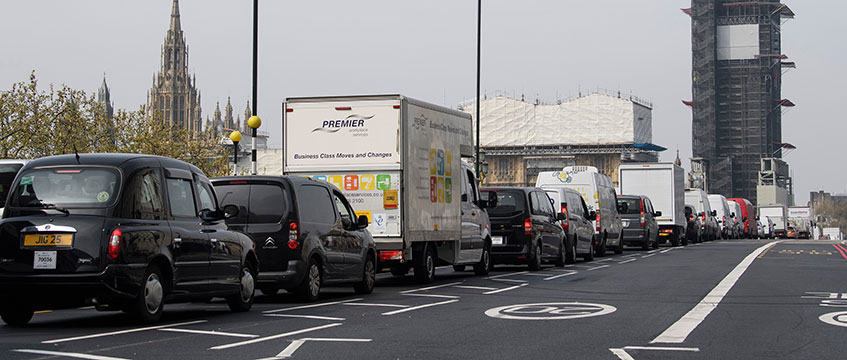London’s recently introduced Ultra Low Emission Zone (ULEZ), which is due to be expanded tenfold in 2021, will (according to the mayor of London) “transform the air we breathe, making it safer for all of us”.
The zone sits alongside the current congestion charging zone, introduced in 2003, which, according to Transport for London’s figures, has reduced private car travel in the capital by 10%.
The ULEZ is part of the mayor’s general strategy to improve the quality of London’s air and will operate in conjunction with other initiatives contained in the draft London Plan and his Environment Strategy 2017.
Potential effect on planning
Does the ULEZ mean we are likely to see a change in the way in which developments in inner London (and indeed outer London once the ULEZ is expanded to the North and South Circulars) come forward? Or will the major impact be restricted to people simply purchasing newer cars that are not subject to the charge?
The ULEZ, like the congestion charge, appears to be aimed more at movement than at ownership of private vehicles. Residents within the ULEZ have been granted a grace period (and are entirely exempt from the congestion charge), so the main initial impact will be on relevant vehicles travelling into the zone.
However, even assuming that this is the long-term goal (logically this would make sense, as cars driving into the zone are likely to be on longer trips, generating higher emissions than cars which only drive within the zone), the question remains: what impact, if any, will the charge have from a planning perspective?
From a purely financial point of view, the maximum annual charge for the ULEZ is just over £4,500. This is a significant amount of money for large parts of the population, in particular those looking to occupy affordable housing units attached to developments.
Even if car parking is provided for these units, this additional annual charge (which will be levied on older and therefore cheaper vehicles) could make affordable units less affordable. This in turn could mean that they become less desirable to registered providers, and that there is a delay in selling market units based on the common section 106 obligation to transfer a quantum of affordable units before doing so with market units.
While this may be a fairly minor impact, the ULEZ should not be looked at in isolation, but in the context of the overall drive by the mayor of London to reduce reliance on car ownership and travel within the capital.
In his introductory remarks to the draft London Plan, the mayor stated: “I also see the London Plan revolutionising the way we get around our city”, and the draft sets out that the intention is for “80% of all trips in London to be made by foot, cycle or public transport by 2041”.
This is supported by the proposed new maximum standards for car parking within residential developments, which reduce the maximum provision to between 0 and 0.5 spaces per unit in all areas of London with a public transport accessibility level of four or above (and in inner London with a PTAL of three).
As it currently stands, different London boroughs take varying approaches to the more flexible maximum standards, with some outer London boroughs encouraging the provision of car parking spaces up to the maximum, and others (such as Camden and Islington) moving towards an entirely car-free policy.
However, assuming that the Examination in Public confirms these numbers (despite the objections by a number of outer London boroughs and the Ministry of Housing, Communities and Local Government), this will represent a sea-change in the way that Londoners travel. Planners and developers will need to be able to promote schemes, even in less accessible areas, which meet the new stringent standards or alternatively will need to be able to fully and robustly justify any above-standard provision.
It is also likely that we will see more requirements for contributions towards, or even the establishment of, car clubs.
Other considerations
It is worth considering the impact of these policies on other requirements for developments. It is well known that councils favour the provision of family units where possible, and in large developments will require a relatively high percentage of the unit mix to be geared towards three- or four-bedroom units.
However, it seems likely that larger families are more likely to require cars. Could an unintended consequence of stringent car parking standards (and indeed the ULEZ) be that families will no longer be interested in family-sized units, even those in outer London boroughs? If this does happen, could it then be argued that there would now be a demand only for smaller units?
Another issue which will need to be considered is whether the local infrastructure is sufficient to cope with zero or limited provision of car parking spaces. PTAL does not always tell the whole story, and many developments (even with a three or four PTAL) rely heavily on private car usage.
TfL will need to address the shortfall, particularly in outer London, by providing more bus routes. It is unclear whether the current community infrastructure levy regime, which has been adopted by all London councils, will be able to fund these.
Larger developers will need to be aware that site-specific impacts of their proposed developments are likely to increase if more transport infrastructure is required.
The mayor’s aim of improving London’s air quality is of course a worthy one. It is clear that, with the ULEZ and the emerging London Plan, the direction of travel is towards fewer cars in the capital. Developers and planners will need to be able to address this when preparing new proposals.
James Kon is a senior associate at Asserson








